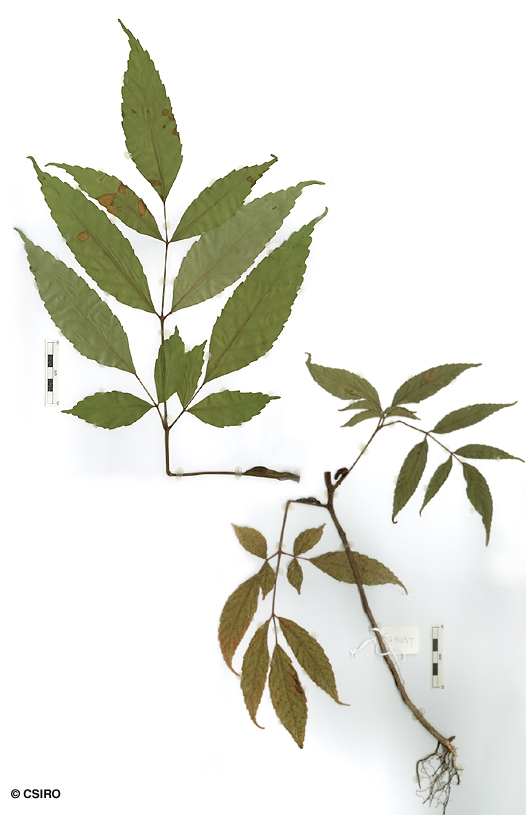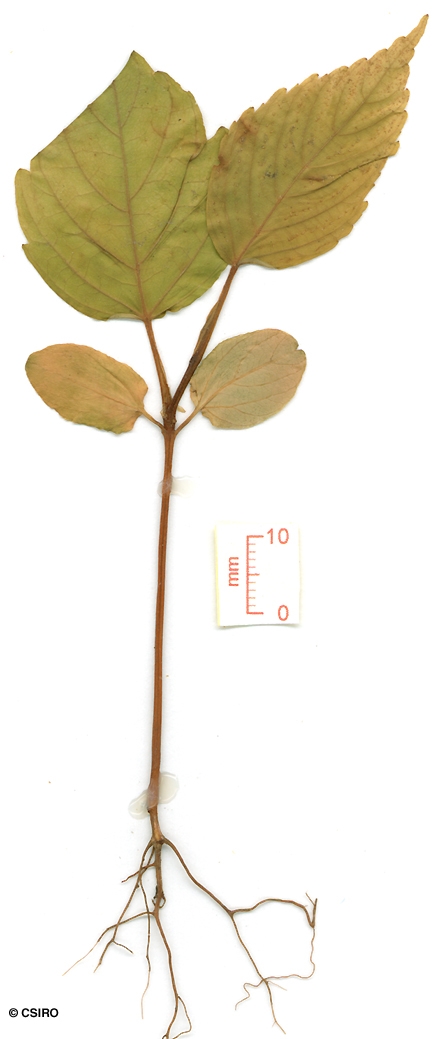Australian Tropical Rainforest Plants - Online edition
Leea novoguineensis Valeton






Valeton, T. (1907) Bulletin du Department de l'Agriculture aux Indes Neerlandaises 10: 31.
Usually flowers and fruits as a shrubby plant about 2-4 m tall but can grow taller. Never looks like a tree. Stems very pithy but vascular rays usually visible in the vascular tissue around the periphery.
Stipules rather large (1.5-6 cm long) sheathing the terminal bud and adhering to the base of the petiole. Compound leaves quite large, about 0.5-1 m long. Leaflet blades about 6-21 x 1.5-9 cm. Stalk of the terminal leaflet much longer than those of the lateral leaflets. Lateral veins curving and forming fairly distinct loops just inside the blade margin. Compound leaf axis swollen at its junction with the secondary axes. Leaflet stalks and compound leaf axes grooved on the upper surface.
Inflorescence leaf opposed. Calyx lobes about 1-2 mm long. Corolla tube about 2.5-3.5 mm long. Basal part of the petals attached to the staminal tube. Staminal filaments attached to the outside of the staminal tube but arched over the rim of the tube so that the anthers are hanging inside the staminal tube. Ovary 6-locular, one ovule per locule. Style shorter than the tubular disk.
Cotyledons about 15-20 x 10-16 mm, petiole 4-5 mm long, shorter than the blade. First pair of leaves with toothed margins. At the tenth leaf stage: stipules about 20-45 mm long, enclosing the terminal bud and also attached to the base of the petiole. Stalk of the terminal leaflet much longer than those of the lateral leaflets. Seed germination time 89 to 159 days.
Previously called Leea indica in Australia. Reference: Molina et al (2013).
This usually multi-stemmed plant with large tripinnate leaves is already in cultivation and is ideal in a courtyard planting.
Leea indica (Burm.f.) Merr., Philippine Journal of Science 14 : 245 (1919). Leea sambucina Willd., Species Plantarum ed. 4, 1 : 1177(1798). Staphylea indica Burm. f., Fl. Ind. : 75(1768), Type: Burman, N. L. (1768) Fl. Ind. 75, t. 23 fig. 2, description. Fide Ridsdale (1974).





